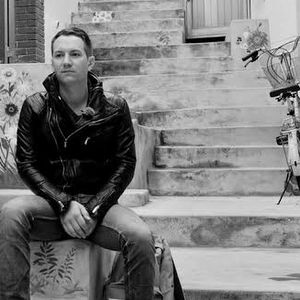 Notebook on Cities and Culture‘s Korea Tour is brought to you by Daniel Murphy, David Hayes, and The Polar Intertia Journal, an outlet for artists and researchers documenting the urban condition.
Notebook on Cities and Culture‘s Korea Tour is brought to you by Daniel Murphy, David Hayes, and The Polar Intertia Journal, an outlet for artists and researchers documenting the urban condition.
Not far from Seoul’s Anam station, Colin talks to Charlie Usher, author of the blog Seoul Sub→urban and the book 찰리와 리즈의 서울 지하철 여행기 (Charlie and Liz’s Seoul Subway Travelogue). They discuss the first subway stations his life in Korea revolved around; the identity of Liz, the photographer in Charlie and Liz; what makes the Seoul subway system the best framework in which to get to know the city; the impressive integration of the subway with the city itself, meaning that city life doesn’t stop at the station entrance; whether he began with any methods and systems for documenting his subway travel; how the whole project came about through “a sense of guilt”; which stations, in and of themselves, make for cool Seoul places; why the concept of shopping in a stations surprises Americans; where, and whether, urban Seoul ends and suburban Seoul begins; how he came to understand Seoul’s role as the focal point of Korea; when he realized Seoul Sub→urban had taken him where he wouldn’t have gone before, and not into the Seoul repetitive blandness of stereotype; when he realized his work interested Koreans as well; how Korea has made him appreciate the diversity of the United States, even in his home state of Wisconsin, and how he has come to appreciate the “deep sense of community” in Korea; why public transit never took hold in the same way in America as it did in Asia; how much of a longing he can develop for whatever lies beyond the train lines; the different Seoul you see depending on the mode of transportation you use; the lack of any good reason for which he first came to Korea after graduation, except for the teacher-exchange program at his university; how his aunt and uncle preceded him to Korea by coming to the more “brutish” Seoul for the 1988 Olympics; what he’s noticed about which languages subway announcements come in at which stops; the change in ridership demographics and advertisements from line to line; why you see white guys on Line 6; whether he uses subways as the framework for understanding other cities as well; his short but extremely deep experience on the Pyongyang metro; what about Seoul still surprises him after seven years there; how many of greater Seoul’s 500-ish subway stations he’s explored; the newly built lines whose openings he even now anticipates; the distinctive bouquets that appear whenever anything has its ribbon cut; when not exploring Korea through its transit, how he explores it through its food; the recent explosion in Seoul coffee shops, which more than freed him from the need to board a train to get to one; and what it felt like to see the fruit of his labors become a Korean-language book.
Download the interview here as an MP3 or on iTunes.
Post a Comment